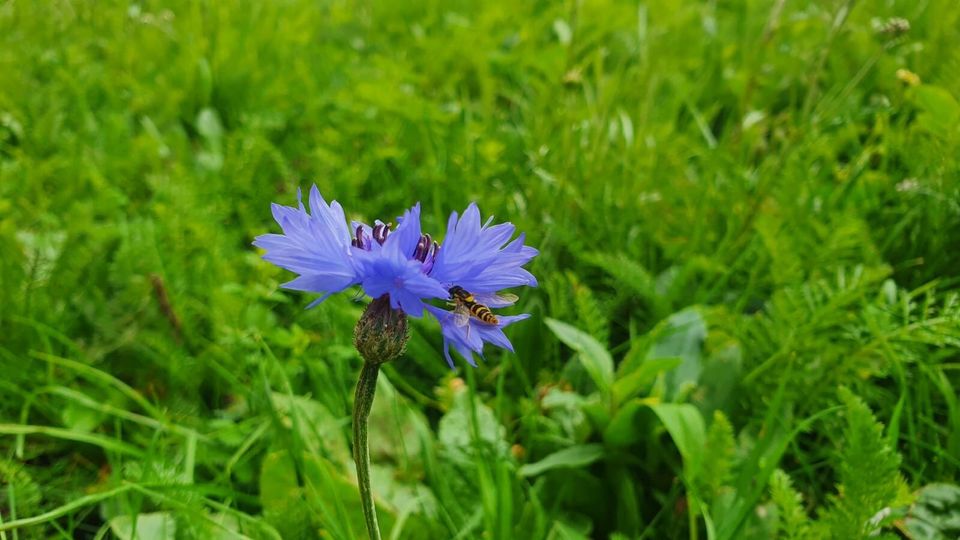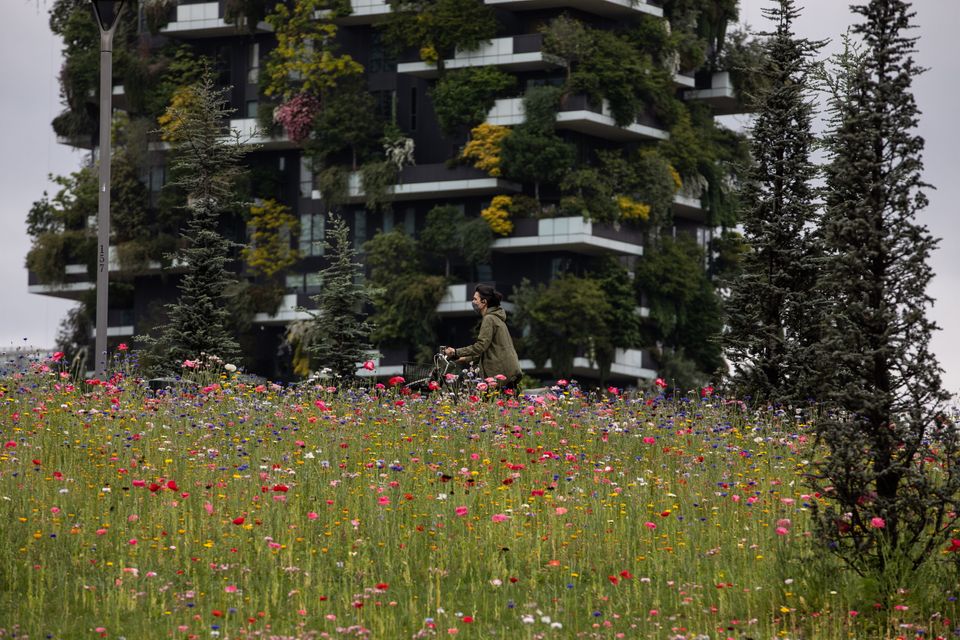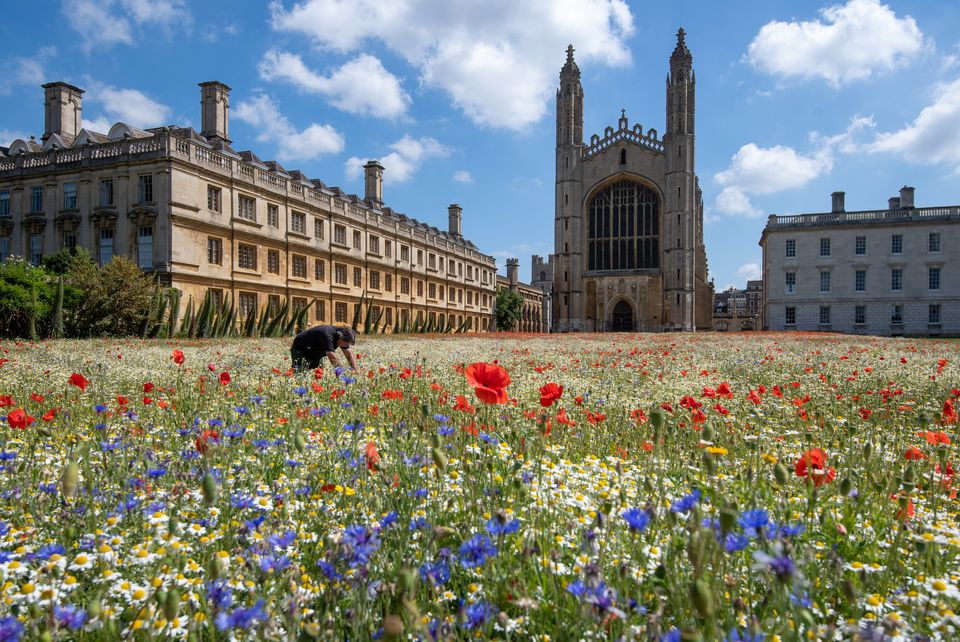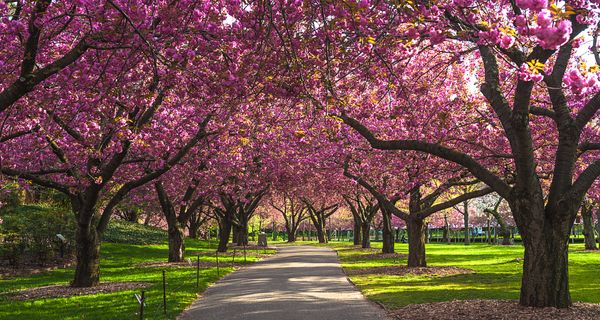You’re reading Summer’s Not Cancelled, a series celebrating summer in this new normal. From rediscovering nature and cherishing time with loved ones, to virtual festivals and unforgettable staycations – summer’s still here, it’s just different.
“The green space outside our iconic front gate may look a little less tidy than it once did,” warned Professor John Parnell, chair of Trinity College Dublin’s grounds and gardens committee. “But it will be more colourful and serve as a constant reminder of what nature looks like, while underlining the increasingly important role we all have in protecting our environment.”
Wildflower meadows are blossoming across the country, with Trinity College only the most recent establishment to embrace ‘rewilding’ – the purposeful planting of wildflowers – after students, staff and the public voted 90% in favour of replacing its manicured lawns with 25 varieties of native Irish wildflowers this summer.

Rewilding public spaces by replacing formal lawns or flower beds with more horticultural diversity seems a constructive way to reimagine how our cities look. But soberingly, there’s more urgency to the practice.
The UK has lost over 97% of natural wildflower meadows since the end of the second world war, due to changes in farming methods – making rewilding an urgent response to a biodiversity crisis, and not just a pretty sight.
Trinity College isn’t alone – city and town councils across the country are turning roadside verges into wildflower beds and devoting areas of public gardens to wildflowers, as charities including Plantlife and Rewilding Britain promote the benefits of filling public spaces with shimmering and colourful flower beds.
Land rich in varying species of flower and plant is good for the environment, as it provides opportunities for bees, butterflies and beetles to pollinate, species that have been declining in numbers since the 1980s.
These animals then transfer pollen to other flowers, ensuring more plants are properly fertilised, sustaining the plant ecosystem and allowing farmers to grow the fruit, such as apples, strawberries and pears, that we rely on for food.

Plus, wildflower meadows are a naturally scaling prospect: whether a meadow is five metres wide or 500, an increase in meadow land allows pollinators to more easily between separate meadows, accelerating the pollination process.
Culturally, the reintroduction of wildflower meadows has also prompted fresh thinking around how we perceive formality and informality in our cities.
Note the Trinity College professor’s use of the word “tidy”– suggesting tidiness was something this prestigious university once strove for, but no longer prioritises – at least in natural terms.
“I think we are becoming a lot less binary about what we think of as being formal and messy and thinking more about the types of experiences people want in urban environments,” reflects Catherine Greig, a city planner who is currently rewilding central London’s Grosvenor Square. “Words like natural and rewilding are coming up more frequently and people are more aware that immersive planting has a really positive impact on our wellbeing.”
Michele Hallahan, sustainability advisor at Trinity College Dublin, agrees with Greig that tidiness is a redundant, even tone deaf concept when thinking about the future relationship between nature and public spaces. “People are already beginning to see that a ‘tidy’ green space is largely a lifeless space,” she adds.
“We have killed off 60% of all species (according to the WWF’s Living Planet Report 2018) as a result of ‘tidying’ things, and we are now in the middle of the sixth mass extinction, caused by humans.”
If you’ve noticed wildflowers more, and appreciated them more, this summer, there could be another reason for that too. “Nature became one of our lifelines during lockdown and people have had the chance to reconnect to the vibrant life that is all around us,” says Hallahan.
Grieg agrees that we’re appreciating the beauty and abundance of wildflowers more this summer. “Nature is good for our wellbeing, and we have all just been through a period of time where our access was limited, so this knowledge has sunk into the public consciousness much more deeply,” she suggests.

Skyscrapers with vertical gardens to increase biodiversity are a common sight in Asian cities, mostly famously, Singapore. They are also a growing practice in Europe, and the UK is finally catching up – and returning to its meadowed past.
Grieg notes that even those that don’t work in city planning can see that “the current way of designing our cities is not sustainable.”
“Through making changes in both large and small spaces to the type of planting, we can hugely increase the amount of greenery, bringing all the benefits for people and for the planet,” she adds.
The diversity of the blooms from wildflowers certainly bring people joy. They are more carefree, more natural in a literal sense and more unusual than the formal lawns, and they are now joyous in new ways, with the knowledge that the multicoloured flowers are helping in the fight to save our planet.
“People will see insects and minibeasts around the planting and start to connect the dots about their benefit,” says Grieg.

Wildflower meadows require significantly less upkeep than perfectly mown lawns – arguably why so many more are appearing in formally formal spaces. Success stories include university settings such as King’s College, Cambridge; Lady Margaret Hall, Oxford; and Goldsmiths College, University of London, to the benefit of staff and students’s mental health. Land has also been meadowed at Gwynedd in north Wales – and even at Stonehenge in Wiltshire.
Experts in the field are exploring the tastier benefits, too – Sid Hill, a Cornwall farmer and gardener, creates ecological gardens, peppered with edible wild flowers and plants to harvest, so it’s not just the bees getting a good feed.
The natural wildflower meadows that older people remember from childhood are often farmers’ fields now, as shifts in agriculture has demanded meadows be replaced by more ploughed land, often covered in pesticides. But now that we have a greater understanding of the benefits of wildflowers – including on our mental health – they are becoming a democratised asset. Campaigners hope soon all towns and cities will have them distributed fairly for all to enjoy.
“The past months have made many people appreciate their green spaces, of all scales so much more and we can see a shift in people articulating this in their conversations with us,” says Greig.
“Being delighted, filled with joy, a sense of magic, connected to nature, a sense of wellbeing; these are all pieces of feedback people have given us when they think about more natural and wilder planting both in terms of spaces they can currently access and what they want from future spaces,” she concludes.




